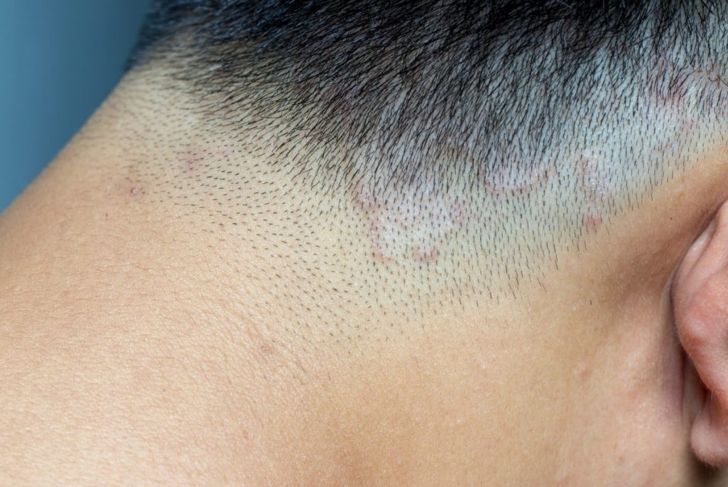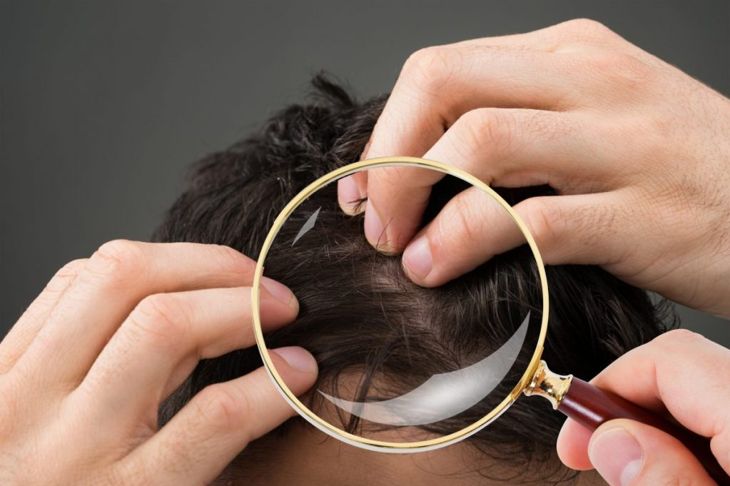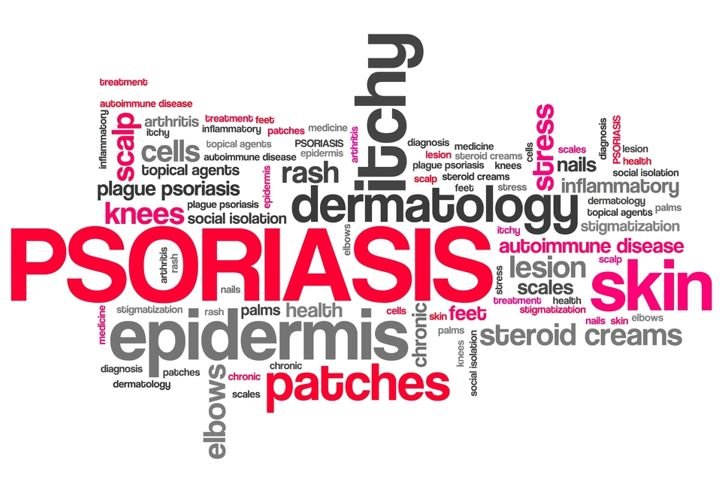Though there are many types of scalp infection, most present with similar symptoms such as flaking, redness, itching, soreness, lesions, and even hair loss. Genetics can play a role, but people often become susceptible to scalp infections due to factors such as poor hygiene, a compromised immune system, stress, or contact with infected humans or animals. While some diseases like psoriasis can be chronic, others like ringworm resolve within weeks with the right treatment. Identifying the source of infection is often the first step to finding an effective treatment.
Dermatophytes
Dermatophytes are a type of fungi that can infect the skin and cause tinea capitis or ringworm. Those most susceptible to this type of fungi are small children, pet owners, and those who come into contact with items such as infected towels, clothing, or bed sheets. Signs and symptoms of scalp ringworm include circular, itchy patches on the scalp where the hair has broken off.
Bacteria
Bacteria are common culprits of scalp infections like folliculitis and impetigo, and often occur when bacteria enter the scalp through a break in the skin. With folliculitis, the infection causes inflamed hair follicles that become itchy bumps filled with pus. Impetigo afflicts mostly small children, spreads easily through infected clothing or other items, and causes red sores that rupture and later form a crust. A warm, humid environment raises the risk of developing both conditions.
Viruses
Viruses such as chickenpox or shingles can spread to and cause infections on the scalp. While many people now receive chickenpox vaccinations at a young age, the virus is still fairly common. The characteristic red, bumpy rash of chickenpox can reappear later in an adult’s life as shingles. Like chickenpox, the shingles virus can spread to the scalp but tends to cause soreness and pain in addition to itching. Shingles is contagious to people who are not immune to chickenpox.
Ingrown Hairs
Another common cause of scalp infections is ingrown hairs. As an area of the body typically covered with more hair than the rest, the scalp is particularly susceptible to the inflammation and pain caused by ingrown hairs. When hair is removed, and the remaining part under the skin gets trapped and fails to grow in the proper direction, ingrown hair develops. Symptoms include pain, itching, and tiny hard bumps. Shaving and other forms of hair removal usually cause ingrown hairs, which often resolve on their own.
Injury
Head injuries can also cause scalp infections and can occur when one frequently picks at their scalp or endures a cut or blow to the head. Puncture wounds can cause scalp abscesses, and open wounds from scratching or trauma can leave the scalp susceptible to bacteria. Because scalp infections quickly become more severe if untreated, it’s important that people with head injuries promptly seek medical advice.
Autoimmune Disease
Autoimmune diseases and subsequent reactions are another cause of scalp infections that can cause long-term symptoms and be difficult to diagnose. Autoimmune-triggered scalp conditions include alopecia areata, a disease that causes patches of hair loss. Lichen planus is another autoimmune disease that mostly affects young women and can cause hair loss as well as pain, itching, and redness of the scalp.
Allergic Reactions
Scalp infections are sometimes triggered by allergic reactions, which are a common cause of many sudden afflictions. Allergic reactions to the scalp can occur from contact with certain chemicals in shampoos, conditioners, or other hair treatments. One common cause of scalp inflammation is a chemical in hair dyes called PPD or paraphenylenediamine.
Psoriasis
Psoriasis is a chronic and prevalent skin condition that creates dry, red patches of skin that often flake and can appear scaly. Scalp psoriasis can range from mild to severe, and plaques and flaking can extend past the hairline onto the back of the neck and forehead. Many who experience psoriasis endure periods of flare-ups that build and subside over time. Some will experience frequent recurrences, and others may see the condition go into remission.
Candidiasis
Candida yeast is a yeast fungal infection that grows quickly in warm, moist environments, which makes the scalp an inviting area. Skin candidiasis can present as itchy red lesions that can form crusts on the scalp. While candida yeast is present in most healthy individuals, a chronic overgrowth can occur in conjunction with pregnancy and diabetes. Topical treatments can resolve many scalp fungal infections.
Seborrheic Dermatitis
While dandruff is a common affliction with which most people are familiar, seborrheic dermatitis is a more extreme condition that causes stubborn flaking, itching, and redness. Many have heard the term cradle cap: the condition’s manifestation in babies creates scaly patches on an infant’s scalp. Frequent scratching can also make one more susceptible to bacterial or viral scalp infections.

 Home
Home Health
Health Diet & Nutrition
Diet & Nutrition Living Well
Living Well More
More




















